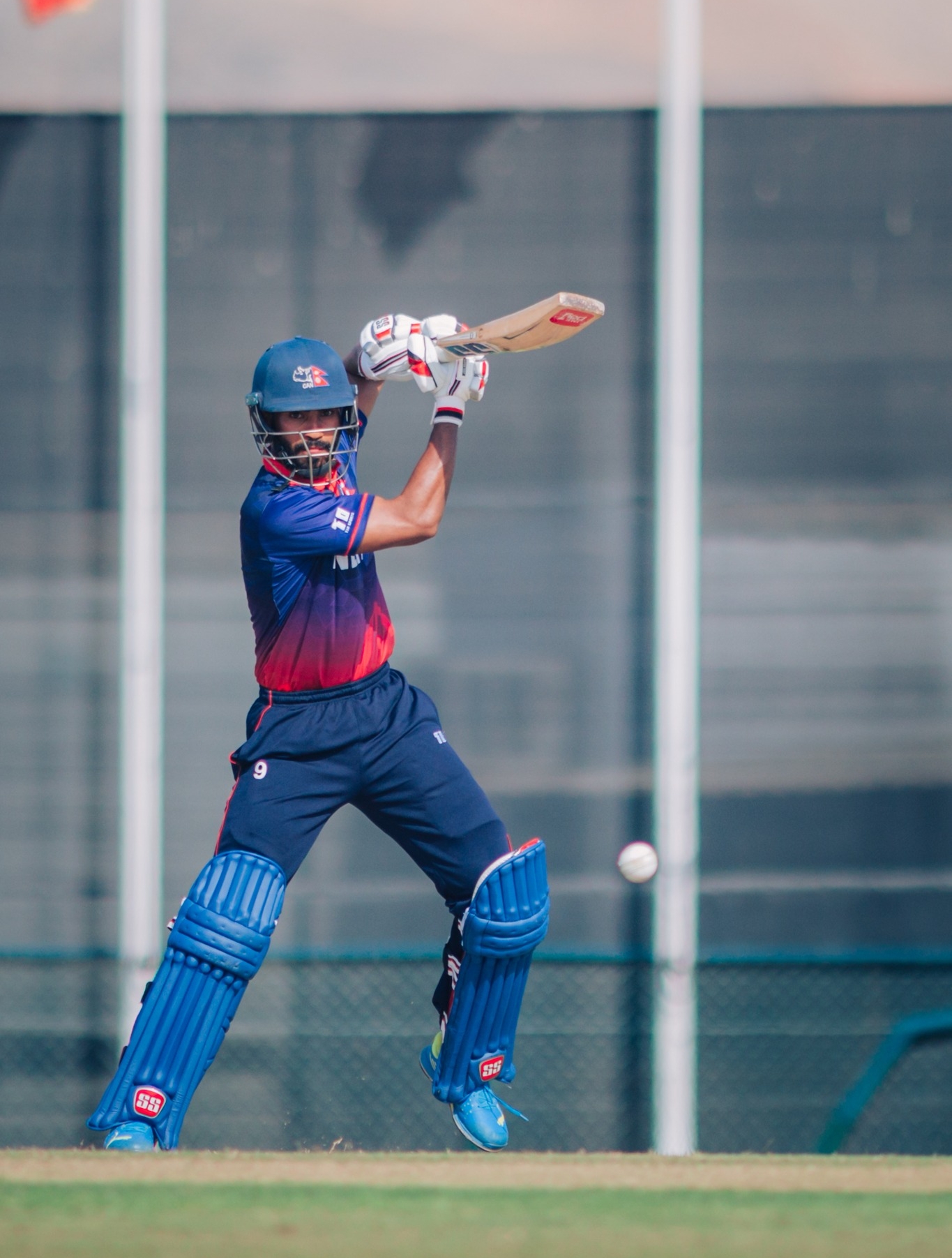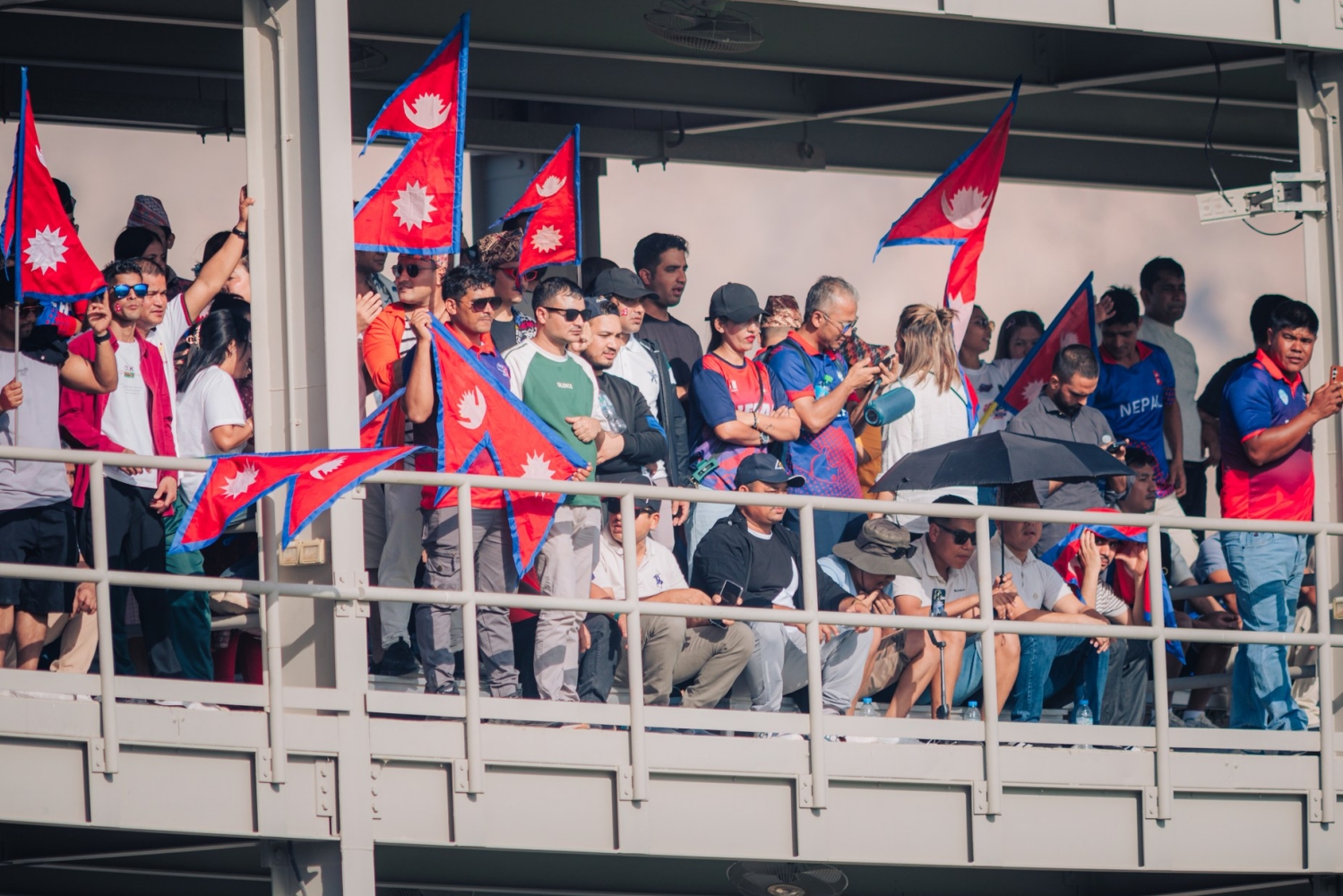Nepal’s prospects at World Cup 2026
NPL starting next month will act as preparation ahead of the games in India and Sri LankaNepal’s cricket team first beat powerhouse West Indies in two out of three matches in September, the first time it won a match and then a series against a test-playing nation.
Then the Rhinos played six qualifiers in Oman for the 2026 T20 World Cup which is being held in India and Sri Lanka from 7 February to 8 March next year. The national team qualified comfortably with two games to spare, and won all six matches anyway.
In the three months before the World Cup, cricketers will play the second season of the Nepal Premier League from 17 November to 13 December.
After a hugely successful first season, steady upgrades have been made. The flood-lit Tribhuvan University Cricket Ground has been fitted with 15,000 seats, even though this takes away from the festival-like atmosphere of fans on their feet on the grassy slope.
Last season, matches began at noon and three in the afternoon. Late-evening matches in winter under flood lights will increase attendance and viewership.
There is also now technology that will display how far a six was hit and how fast a ball was bowled. Foreign players who will play in the league include Chris Lynn, D’arcy Short, Ravi Bopara, and Sohail Tanvir, all good ex-international players that people have heard of.

But the most important point of the Nepal Premier League will be to prepare and experiment for the World Cup, which starts less than two months after the NPL ends. Team Nepal will be extra eager to play well, given that the matches are happening in South Asia and Nepali fans can make the trip.
Head coach Stuart Law will be watching each NPL match keenly, to gain more insight into how to best use his current starters.
As each of the eight teams are only allowed a maximum of four foreign players in their starting eleven, Law and Nepali fans will also be scouting new talent who will be hungry to emerge and prove themselves to earn a place in the World Cup Squad.
ALL-ROUNDERS
One of the most unusual features of the current Nepali squad is how many all-rounders there are. Kushal Bhurtel, Rohit Paudel, Kushal Malla, Gulshan Jha, and Dipendra Singh Airee are all regular starters, and they all bat and bowl. Opener Aasif Sheikh is also the wicketkeeper.
Airee, of course, is also an excellent fielder. In the first five games of the qualifiers, he got a record five runouts with direct hits, and was on a roll with a run in every single game. This depth means that almost always seven players bowl for Nepal, and the wealth of options keeps the opponent batting order guessing, but it may create hesitancy within the team in tough situations against stronger teams.
Countries at the top level of the sport tend to have more specialists. Perhaps Stuart Law might want to tell Bhurtel to really focus on his batting, or Airee to hone his bowling, which seems to be their strengths. The team would be better off with them performing one aspect consistently well than being hit or miss with both.

POWERPLAYS
The Nepali team likes batting first. It chased only against Japan, but they struggle to put up really competitive scores of say, above 170 unless two batsmen do really well.
In the second match against the West Indies, Aasif Sheikh’s 68 and Sundeep Jora’s 63 set up Nepal at 173/6. Against Samoa, Aasif Sheikh had 69 and Airee had 53, before Lokesh Bam’s fierce 39 off 12 featuring 4 sixes set up 211/4.
Besides these games, Nepal tends to score up to 150 batting first. To the experienced teams that Nepal will face at the world cup, this is not at all an intimidating score. One reason is that Nepal just cannot seem to get going in the first six powerplay overs, when there are limited fielders on the boundaries.
A solution to this might be to promote Gulshan Jha up the order. Although Jha has also been an excellent batter in the end overs, using him at three or four might help set up a more productive powerplay and bigger scores. He should try it out with the Karnali Yaks.
Despite all the controversy that comes with Sandip Lamichhane, and his strange decision to sit out the West Indies series minutes before the first match started, his output with the ball is undeniable.

He took wickets in each of the six qualifiers, most notably five vital ones in the match against Qatar that Nepal won by five runs. Lamichhane also gives away very few runs, which cuts some of the more part-time bowlers some slack.
Airee is also economical, and his 3/22 was vital in the one-run win against the UAE. Together with Lamichhane the duo constricted the opposition in the middle overs. Veteran Sompal Kami has not been as productive with the ball, and gave away a lot of runs in the series against the West Indies.
This is a weakness, because Kami does not contribute with the bat much. While his experience is valuable to ground the young Nepali team, Stuart Law should look out for fast bowlers during the NPL to help balance out quality spinners.
One of the most impressive and professional parts of Nepal’s winning streak has been the attention to detail. The players have been generally excellent in the field, giving away very few runs due to wides or no balls. They had three run outs against the UAE and two against Qatar and Japan and in the first game against the West Indies.
The fielders seem much calmer and focused when executing difficult catches, a welcome change from past complacency. This attention to detail makes the difference in narrow games and keeps morale high.
The Nepali team has performed well, but besides the narrowly-beaten UAE, all the matches were against teams ranked lower in the world T20 rankings. And the series against the West Indies was against a weakened team. In the world cup, Nepal will be facing much stronger teams and will lack the element of surprise it had in the 2024 World Cup.
If Nepal wants to keep improving, it now has to be able to dominate teams like Kuwait and Oman. It also should set up more series with associate nations like Scotland, Ireland, Namibia and The Netherlands. This will help accurately gauge the team’s progress and expose its weaknesses.
writer




